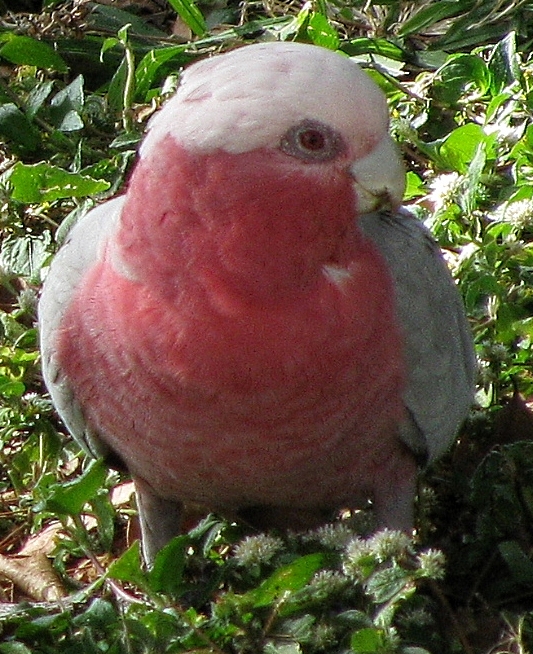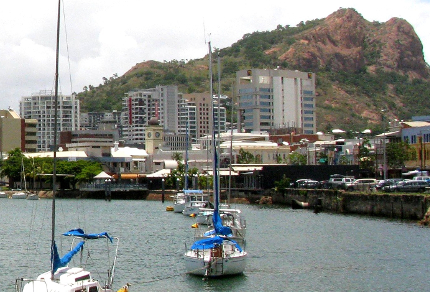After breakfast I wandered along beside the golf course and into Bicentennial Park, soaking up the dry tropics birdlife so different from the rainforest birds at Lake Paluma, yet endearingly familiar to me after spending seven months as a temporary Townsvillian. The noisy lorikeets. The skulking bowerbirds. The kookaburras with their chisel beaks and disproportionately large heads. The Australian raven with its white eyes and surprisingly high-pitched voice calling out “Ah-aaaahhh” as though it’s observed me committing some misdemeanour. Canadian ravens are so much larger than their Australian counterparts, their voices deep, gurgling, and hoarse, as though worn from projecting over vast expanses of forest, tundra, mountain, of wilderness.
In mid-morning, Vilis and I drove downtown to hear a different kind of voice, that of Ara Vartoukian, a piano technician for Steinway pianos who presented a seminar titled ‘Secrets of Steinway’ in association with the Australian Chamber Music Festival currently under way in Townsville. Clearly impassioned with his craft and possessing a gift for imparting technical information in a manner easily understood, Mr. Vartoukian explained the origins of the piano and led us on a virtual tour of the hand-crafted production of a Steinway piano. I learned, among many other things, that beneath and behind the keys of a Steinway piano lie 11,000 to 12,000 other parts, that its rim is constructed of laminated rock (sugar) maple and mahogany, and that concert grand pianos last only 5 to 20 years before losing their ability to project their sound to the back of concert halls. As a piano student, I was intrigued by the fact that the first piano was invented around the year 1700 when a harpsichord maker named Christofori in Italy devised a way to use small, padded hammers to transform the single-amplitude sound of a harpsichord (where the strings are plucked), into a more dynamically-versatile sound that allowed notes to be played softly or loudly, piano or forte, from whence arose the instrument’s name of pianoforte, now shortened simply to piano.
The seminar room was crowded with music enthusiasts, evidence of the popularity of the Australian Chamber Music Festival, which Townsville has hosted annually since 1991 and which brings to North Queensland not only Australian classical musicians, but acclaimed performers from the world over. During the festival, which features more than 25 concerts spaced over an interval of nine days, chamber music fans will revel in the talents of 25 to 30 musicians, including the Australian String Quartet, didgeridoo virtuoso William Barton, Melbourne bright-star pianist Kristian Chong, and four-time ACMF performer, the gifted UK violinist Jack Liebeck.1 This sashay of musical stars belies a comment made by a young Sydney-born birder I met who bemoaned Townsville’s apparent lack of sophistication in terms of shopping choices. She sniffed derisively and muttered, “Country town.” It’s certainly true that Townsville isn’t Sydney, but Townsville – not Sydney – is hosting the Australian Chamber Music Festival.

Townsville, Queensland (© Magi Nams)

Galah (© Magi Nams)
Today’s birds: rainbow lorikeets, white-gaped honeyeater, mynas, scaly-breasted lorikeets, peaceful doves, great bowerbird, helmeted friarbirds, magpie-larks, rock doves, brown honeyeater, blue-winged kookaburras, masked lapwings, straw-necked ibis, Australian white ibis, yellow honeyeater, Australian raven, little black cormorants, figbird, rainbow bee-eaters, spangled drongo, nutmeg mannikins, Australian magpie, white-bellied cuckoo-shrike, little corellas, white-breasted woodswallows, house sparrows, olive-backed oriole, blue-faced honeyeaters, laughing kookaburra, galahs, pied butcherbirds.
Reference:
1. Australian Festival of Chamber Music. Festival Profile. Accessed 13-Aug-2010. http://www.afcm.com.au/about_afcm/festival_profile.php


